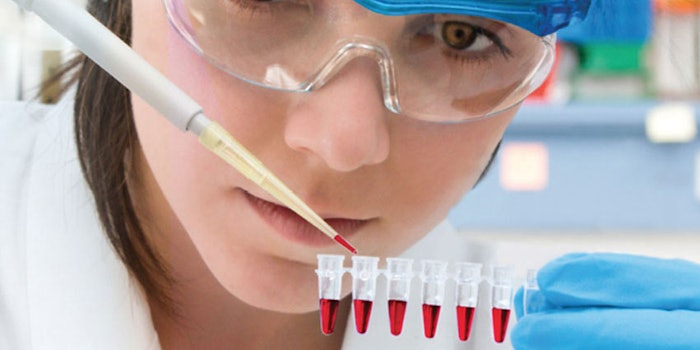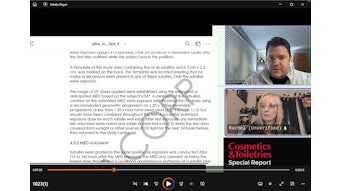
Scanning U.S. Food and Drug Administration (FDA) warning letters to cosmetic companies, it is clear that cosmetics are being formulated with the intent of altering the structure or function of human skin. Historically, we considered these kinds of claims as extreme marketing, in an effort to convince consumers that a product provided real and long-lasting benefits. Twenty-five years ago, the industry had very few tools to actually make such changes to skin. Active ingredients were typically included in products at infinitesimally small quantities, in order to make a label claim. The challenge for formulators then was to develop products with excellent aesthetics whose effects were much shorter-lived. Such products truly met the intended definition for a "cosmetic."
It can be deduced from today’s scientific literature that countless ingredients have been developed with the intent to alter the structure and function of human skin; and by extrapolation, that the finished products they are used in are intended to do so as well. These bring truly exciting and innovative possibilities for the cosmetics industry. At the same time, this raises important questions in terms of how these products should be regulated, what types of safety standards they should be held to, and how consumer complaints and adverse reactions should be monitored.
Pharmacovigilance in Action
Today, there is a stark contrast in the requirements between cosmetics and true drugs. A good example is sunscreens, which in the North American cosmetics market, are regulated as drug products. In conjunction, new sunscreen actives are classified as new drugs, mandating the same extensive safety, efficacy and quality assurance testing and oversight as drugs. This classification also requires mandatory reporting of serious Adverse Drug Reactions (ADRs) to regulatory authorities and the practice of pharmacovigilance, which involves the detailed analysis and reporting of adverse events from drugs.
The basic elements of pharmacovigilance include:1
• A summary of ongoing safety issues.
This includes important identified risks, potential risks and missing information.
• Routine pharmacovigilance practices.
These are the systems and processes that ensure information on all reported suspected adverse reactions is collected in an accessible manner. It also includes the preparation of reports for regulatory authorities and the continuous monitoring of the safety profile of approved products.
• An action plan for safety issues.
If a safety issue is identified, it should be specified. Also, proposed actions, their objectives and rationale should be documented. Monitoring by the sponsor for safety issues and proposed actions must be carried out, and milestones for evaluation and reporting set.
• Summary of actions to be completed.
The summary should consider when exposure to the product will have reached sufficient levels to allow for the identification and characterization of ADRs and when the results of ongoing or proposed safety studies are expected to be available.
Beyond these basics are various pharmacovigilance requirements for the different entities involved in the production and marketing of drug products, described as follows.2
Manufacturer Requirements
• Report all information relating to serious adverse drug reactions within 15 days after receiving or becoming aware of them.
• Prepare an annual summary report of all information relating to adverse drug reactions and serious adverse drug reactions.
• Maintain records of the reports and case reports.
• Retain each record for 25 years, beginning the day after each is created.
Unlike drugs—where monographs dictate what actives can be used and regulatory processes control what actives make it to market—no such barriers exist for cosmetic actives.
Requirements for Product License Holders
Author's note: Examples include Drug Identification Number [DIN] holders or Market Authorization Holders [MAHs].
• Complaints procedure
• ADR procedures
• Receipt of ADR data
• Evaluation of ADR data
• Reporting of ADR data to Health Canada
• Literature search
• Contractual agreement
• Validation of computerized systems
• Preparation of annual summary report
• Preparation of an issue-related summary report
• Maintenance of records
• Receipt and reporting of unusual failure in efficacy for new drugs
Requirements for Importers
• Complaints procedure
• ADR procedures
• Receipt of ADR data
• Contractual agreement
• Validation of computerized systems
• Maintenance of records
• Receipt of unusual failure in efficacy for new drugs
Cosmetovigilance Applied
The parallel term to pharmacovigilance in the world of cosmetics is cosmetovigilance. Relatively new, it was first introduced in a 1997 French publication in the context of “monitoring cosmetic product safety.”3 Several European countries experimented with cosmetovigilance systems between 1989 and 2005, with varying degrees of success. One of these trials resulted in the August 2004 Public Health Law, which is the foundation for cosmetovigilance in France today.
This system has led to the detection of emerging allergen and sensitizing ingredients such as vitamin K, paraphenylenediamine (PPD) and octocrylene. Following the Council of Europe Resolution ResAP (2006), Belgium, Denmark, Germany, Italy, Norway and Sweden implemented cosmetovigilance systems, in which cases reported by health care professionals were collected. In a two-year pilot study, more than 1,600 undesirable effects were reported, of which up to 64 were deemed serious.
The industry must embrace cosmetovigilance as a priority for products whose benefits extend beyond short-term 'cosmetic' effects.
Allergy, Irritation and Beyond: Safety in Phases
Family doctors, allergists, dermatologists and immunologists manage all skin conditions related to irritants. Patients typically present with two types of reactions: contact dermatitis and allergic dermatitis. Some patients experience a combination of both.
Contact dermatitis is a direct injury to layers of the skin; allergic reaction involves the immune system, where antibodies are formed to attack the antigen, e.g., the cosmetic ingredient. This skin reaction can manifest with varying degrees of redness, superficial and deep swelling, blisters and hives; it occurs through direct or airborne contact. In review of the literature, the incidence of dermatitis due to cosmetics is between 2% and 8%.3, 4
In contrast with cosmetics, drugs developed for topical or oral use must consider safety beyond allergy and irritation. New drugs are developed in a series of stages or phases that begin with preclinical animal models and progress through a series of human studies with increasing numbers of clinical subjects. A typical new drug development pathway is described as follows.
Pre-clinical: Prior to testing the drug in humans, it must be investigated for toxicity, i.e., its potential to cause harm. This is carried out through either in vitro or in vivo research.5
Phase I: A several-months-long study is conducted on 20–100 otherwise healthy people with the condition of interest to evaluate the safety and dosage of the drug. Approximately 70% of drugs move to Phase II.6
Phase II: Several hundred people with the condition participate in a study lasting from several months to two years to investigate the efficacy and side effects of the drug. Approximately 33% of drugs move to Phase III.
Phase III: This larger-scale study of the drug’s efficacy involves monitoring 300–3,000 volunteers having the condition for adverse reactions over a 1–4 year trial period. Only after a drug passes the pre-clinical trial and first three clinical phases can it be submitted to a regulatory agency for review and approval. Approximately 25–30% of drugs move to Phase IV.
Phase IV: This phase represents post-market safety monitoring once a drug is on market.
These lengthy and costly studies and analyses examine safety implications beyond allergy and irritation. They are intended to examine the systemic and long-term effects of new drug products. While such a discussion might seem out of place in the context of cosmetics, entrepreneurial efforts in the industry are showing tremendous promise for creating molecules that could have profound implications on skin aging and skin restoration. Yet, unlike drug products, where monographs dictate what actives can be used for common drugs, complex regulatory processes control what new active ingredients make it to market, no such barriers exist for cosmetic actives.
In the United States, action is being taken to shift to a similar cosmetovigilance framework as that adopted by European countries. The proposed 2015 Cosmetic Modernization Amendments and 2016 Personal Care Products Safety Act have been drafted, and require that cosmetics companies report any serious adverse health events associated with their products to the FDA.7, 8 And most likely, any reactions reported would be topical in nature and not systemic. The measures in these bills would provide an excellent start.
Conclusion
For cosmetic scientists, this is an exciting and profound time, where we can look forward to making real differences in skin aging and other disorders. But there are questions we must face with eyes wide open: What are these products we are making? If, for example, we can incorporate an active into a wrinkle cream that can repair DNA, what standards must we hold such a product to? We, as an industry, must ensure this technology can be used safely without the same routine preclinical testing as required for drug products, and we must put plans into place for the responsibility of safety assessments for new molecules incorporated into cosmetic products.
While there is no easy answer to these questions, the industry must broadly embrace cosmetovigilance as a priority for products whose benefits extend beyond the short-term effects intended for cosmetics. This should include a stronger effort to monitor and characterize adverse reactions and share them globally, with responsibility shared by both ingredient suppliers and brand owners.
As an industry, added regulation and procedures are rarely welcomed. However, this is a critical insurance policy we must implement to protect our companies, brands and the industry’s reputation. This will allow our innovation programs to proceed safely and successfully.
References
All websites accessed April 10, 2017.
- https://www.fda.gov/downloads/drugs/guidancecomplianceregulatoryinformation/guidances/ucm073107.pdf
- http://www.hc-sc.gc.ca/dhp-mps/compli-conform/gmp-bpf/docs/gui-0102_gvp-eng.php
- http://www.jle.com/en/revues/ejd/e-docs/cosmetovigilance_definition_regulation_and_use_in_practice_303725/article.phtml?tab=texte
- https://www.ncbi.nlm.nih.gov/pubmed/19808005
- https://www.fda.gov/ForPatients/Approvals/Drugs/ucm405658.htm
- https://www.fda.gov/ForPatients/Approvals/Drugs/ucm405622.htm
- https://www.congress.gov/bill/114th-congress/house-bill/4075/all-info
- https://www.congress.gov/bill/114th-congress/senate-bill/1014











